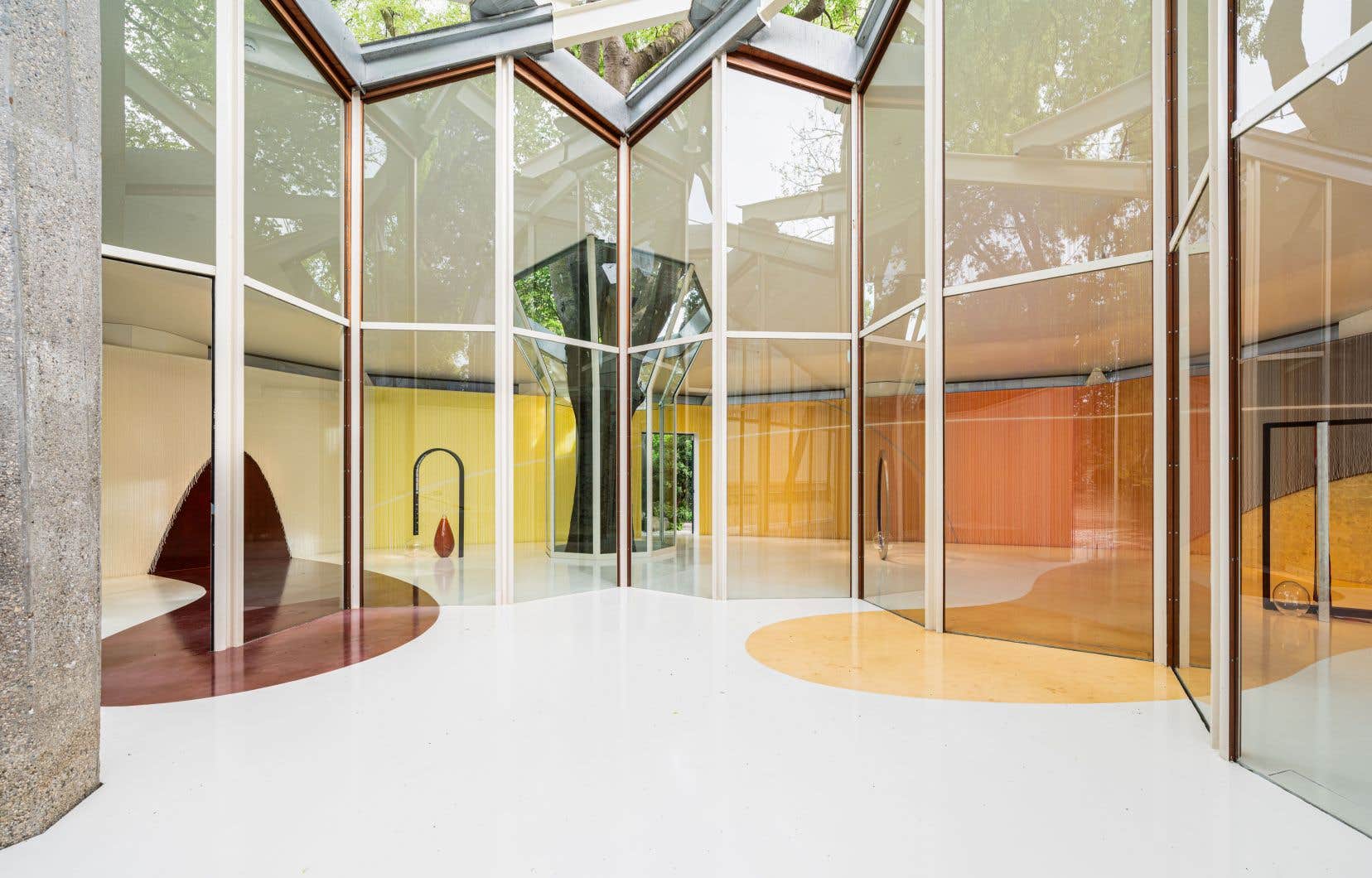The 60e International art exhibition, the famous Biennale di Venezia, opens this weekend with, or After, the splendor attached to it — three days of pre-opening, in particular. Elsewhere and the distant, terms connoted with colonialism, will be present in particular in the main site of the event, the Giardini, where the oldest national pavilions are located, including that of Canada.
The central exhibition, presented for the first time by a Latin American curator and more broadly by a voice from the Southern hemisphere – the Brazilian Adriano Pedrosa, from the São Paulo Art Museum – takes place on the theme “Foreigners everywhere “. The France pavilion will be occupied for the first time by an artist from the Caribbean, Julien Creuzet. In the Czech and Slovak building, Eva Kot’átková proposes a critical project of the collection of so-called exotic animals through the case of an emblematic giraffe from the Prague zoo. Denmark will be represented by an Inuit from Greenland, Inuuteq Storch. And so on.
Canada selected Kapwani Kiwanga, born in Hamilton, but trained as an artist and based in… Paris. She transforms the Canadian pavilion, often criticized for its inhospitable architecture, with an immersive installation inspired by global trade. The work, named Trinkets (“bibelot” in French or, if it is the verb, “to plot”), has the political subtleties that make the reputation of the one who is destined to become an international star, if she is not already one.
The diversity of its aesthetics and its materials made the writer and architect Lesley Lokko say, in an imposing monograph published in 2022, that “Kiwanga art is neither easy to define nor to explain, because it resists to any disciplinary categorization. In an interview, the main person concerned admits it with a laugh, but the one who has often discussed colonialism manages to point out a characteristic feature of her practice: “questions of power and the asymmetry of power”.
Before settling in France, the Ontarian passed through Montreal, where she studied anthropology and comparative religion. She continued her training at the École nationale supérieure des beaux-arts in Paris and at Le Fresnoy, a renowned art school located near the Belgian border.
“Montreal is the last place I lived in Canada. I have very good memories of it,” she says from Rome, where she benefits from one of the sixteen residences within the Villa Medici of the French Academy. Once her career began, she returned to Quebec in 2018 to exhibit, in quick succession, at the Clark Center, in Mile End, and at the Joliette Art Museum. In 2024, his name reappeared here during two group exhibitions, one at the Montreal artist center Optica, the other at the Manif d’art, the Quebec biennial (ongoing until April 28).
The one who has exhibited everywhere where it matters for ten years arrives at the Venice Biennale at the age of 46 with solid experience and honored with prizes, including the 2020 Marcel-Duchamp Prize with its grant of 90,000 euros, which confirms the “profusion creative of the French scene”. So, is Venice big?
“As far as size goes, it’s not the biggest,” she replies. But in terms of visibility, it’s the biggest platform, the biggest invitation there is, for prestige and accountability. [C’est moi qu’on a choisie] among all the Canadian artists who could have been. So, I have to do something that does honor [à mes] brothers and sisters. »
Thousands of pearls
Venice, a historic crossroads of commerce, is at the origin of the work that Kapwani Kiwanga designed over a year and a half, accompanied by curator Gaëtane Verna. It’s the pearl nonsense, specific to Murano, an island in the Venice lagoon known for its glassmaking tradition, which is at the heart of the transformation of the Canadian pavilion into a building whose exterior and interior merge. The artist used thousands of them, among other materials, such as wood, metals and palm oil.
“All my work is anchored in a place. It’s the starting point. I rarely develop a project in my head, in the workshop, which I then pose in an environment. I have an invitation, I visit the places, and I respond to the environmental, social, economic, political or architectural context. In Venice, there is all that. »
Kapwani Kiwanga discovered Venice as a tourist, “quite young”. And if she returned more than once for the Biennale — “not often, I didn’t have the means, [j’y allais] when I was invited” — it has always kept its initial impression: a small town with a gigantic scope. Hesitating between a project around botany inspired by the Giardini and another with glass, she chose the second, for the play on scale it offered. There nonsense was decisive when the artist understood that the little pearl had long served as currency and shaped the world since the 16the century.
Kapwani Kiwanga mentions palm oil as an example of a resource that Europe, then in the midst of the Industrial Revolution, obtained in exchange for Murano pearls. This cheaper oil allowed “machines to run,” she found during her research, while systemic forms of slavery and mineral extraction developed in parallel.
The raw materials she brought to Venice will, she hopes, reflect the complexity of the global economy and allow new readings of Venetian history. His approach, however, does not aim to explicitly recount a fact, nor to denounce one. Kapwani Kiwanga prefers to focus on the poetry of art and the physical experience of his installations, whether this Trinkets or another.
“The idea is not to change the past, rather to understand it and understand [le présent], she says, thinking of human and environmental contexts that are not always healthy. We build our societies without knowing where it comes from. I always ask a very simple question: why? Why like that ? »
